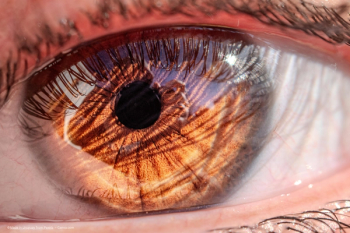
Generic drugs in glaucoma
In this article, the author provides a summary of the current market and considerations with regard to generic drugs for glaucoma treatment.
For the purposes of drug approval, the interchangeability of a generic drug and the corresponding brand-name drug is based on the criterion of 'essential similarity'. This requires that the generic drug has the same amount and type of active principle, the same route of administration and the same therapeutic effectiveness as the original drug, as demonstrated by a bioequivalence study, generally using blood samples.
However, in ophthalmology, bioequivalence studies are not conducted as it is difficult to determine in which structure the measurements should be done. Often, clinical studies are also considered to not be necessary in practice and regulators are focusing more on the quality of the manufacturing process. For example, a 10% difference in concentration of active compound is considered acceptable, compared to branded alternatives.1 Normally, both the active drug and the adjuvants are similar in generics and in brands, but added compounds can be present in generics for improved stability.
Comparative studies
With other generics of Latanoprost, such equivalence has not been observed. In fact these alternatives were found to have an IOP lowering effect of only two thirds of that offered by the original brand.3 This reduction of efficacy was partly due to poor stability, as it was more significant when the bottle was open for one month or exposed at high temperature.
Corneal epithelial disorders have also been described with generics, due to an additional stabiliser compound.4 In these cases one should not only consider the drug itself but should also take into consideration the bottle for correct usage of the drug. With one generic of Timoptic XE, for example, the size of the tip of the bottle and thus the volume of a drop have been shown to be reduced by 25% compared to the branded drug.5
Summary
Anti-glaucoma generic drugs are currently prescribed on a large scale, as many drugs are becoming off patent. For latanoprost, the generic share is more than 65% in most of the European countries. Despite this high figure, few side effects or losses of efficacy have been observed in current practice.
However, it must be noted that generics can differ from brand-name drugs and it could be necessary to control patients more thoroughly when switching. If there is any doubt at all, it would probably be wise to use the brand-name drug.
Professor Jean-Philippe Nordmann, MD, PhD, is Professor of Ophthalmology at the University of Paris V, Paris, France. He may be reached by E-mail:
Prof. Nordmann is a consultant for Alcon, Allergan and B+L.
References
1. W.A. Chambers, Ophthalmology, 2012;119(6):1095–1096.
2. C. Allaire et al., Eur. J. Ophthalmol., 2012;22(1):19–27.
3. A. Narayanaswamy et al., Indian J. Ophthalmol., 2007;55(2):127–131.
4. Y. Takada et al., Case Rep. Ophthalmol. Med., 2012;2012:536746.
5. Z.N. Mammo et al., Can. J. Ophthalmol., 2012;47(1):55–61.
Newsletter
Get the essential updates shaping the future of pharma manufacturing and compliance—subscribe today to Pharmaceutical Technology and never miss a breakthrough.




